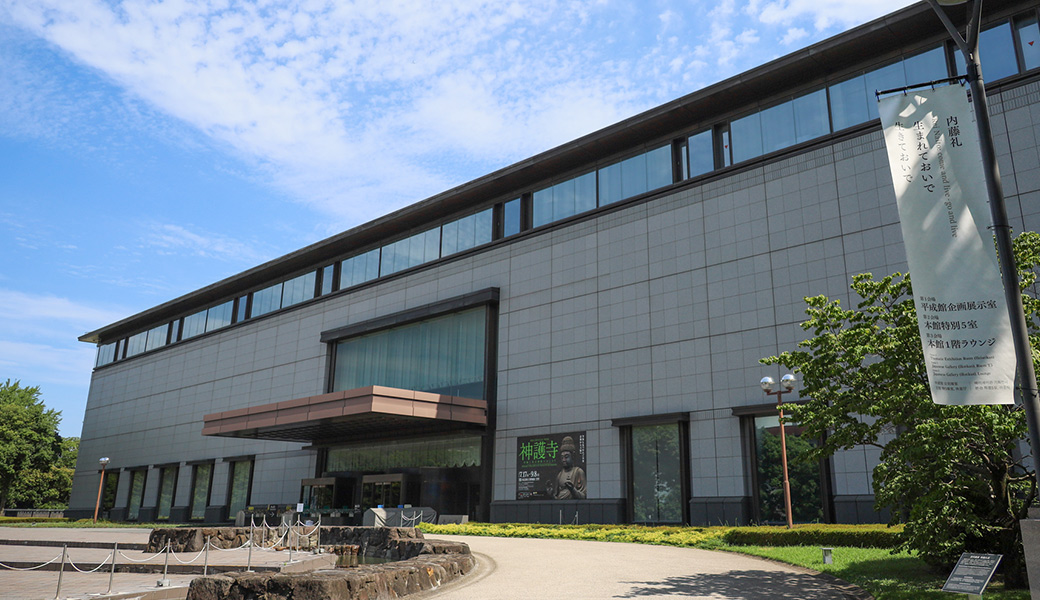Tokyo National Museum, Japan’s oldest and largest national museum, houses over 100,000 precious artifacts that showcase the rich artistic history of Japan. This guide will introduce you to this treasure trove of art and help you navigate the essence of Japanese culture.
Key Information
- Location: Ueno Park, Tokyo
- Established: 1872
- Collection: Over 100,000 artifacts, including nearly 100 national treasures
- Main Buildings: Honkan, Toyokan, Heiseikan, Gallery of Horyuji Treasures, and more
- Exhibits: Japanese art, Asian artifacts, archaeological discoveries
Rich History
Founded in 1872, Tokyo National Museum was initially located at Yushima Seido Shrine before moving to its current location in Ueno Park. As Japan’s oldest national museum, it has witnessed the country’s modernization process while playing a crucial role in preserving and transmitting traditional Japanese culture.
Main Exhibition Buildings
Honkan (Japanese Gallery)
Built in 1938, Honkan is the main building of the museum. It displays Japanese art from ancient times to the 19th century, including Buddhist sculptures, paintings, ceramics, and samurai armor. Visitors can systematically explore the development of Japanese art here. The galleries are organized by era and theme, covering various fields such as painting, calligraphy, sculpture, lacquerware, and textiles. The National Treasure Room, showcasing Japan’s most precious art treasures, is particularly noteworthy.
Toyokan (Asian Gallery)
Designed by renowned Japanese architect Yoshiro Taniguchi and completed in 1968, this five-story building exhibits artworks from China, Korea, Southeast Asia, Central Asia, India, and Egypt, allowing visitors to appreciate the diverse cultures of Asia. The first and second floors mainly display Chinese art, including bronze ware, ceramics, calligraphy, and paintings. The third floor is dedicated to Korean art, while the fourth floor focuses on Southeast Asian, West Asian, and Egyptian artifacts. The top floor houses a special gallery for Chinese calligraphy and painting.
Heiseikan
Built in 1993, Heiseikan primarily showcases ancient Japanese culture and hosts large special exhibitions. The archaeological exhibits here allow visitors to travel through time and explore ancient Japanese civilizations. The first floor’s Japanese Archaeology Gallery displays artifacts from the Paleolithic era to the Edo period, including Jomon pottery, bronze mirrors, and Haniwa figurines from the Kofun period. The second floor often hosts various special exhibitions on themes covering Japanese and world art and culture.
Gallery of Horyuji Treasures (Horyuji Homotsukan)
This is the museum’s newest building, completed in 1999, dedicated to housing and exhibiting precious artifacts from Horyuji Temple in Nara. The collection includes Buddhist art pieces from the 7th and 8th centuries, such as Buddha statues, Bodhisattva figures, and bronze ornaments with lotus patterns. The building itself, designed by Yoshio Taniguchi, adopts a modern minimalist style, creating a striking contrast with the ancient artifacts and demonstrating a perfect fusion of tradition and modernity.
Kuroda Memorial Hall
Although located outside the main museum area, the Kuroda Memorial Hall is not to be missed. Built in 1928, it commemorates Seiki Kuroda, known as the father of modern Western-style painting in Japan. The hall displays Kuroda’s oil paintings and sketches, offering insight into the development of modern Japanese art.
Hyokeikan
Hyokeikan is the oldest building in the museum complex, constructed in 1909 to commemorate the wedding of the Taisho Emperor. This Western-style building is itself a representative work of Meiji-era architecture and is designated as an important cultural property. Although it’s mainly used for temporary exhibitions now, its elegant appearance and historical significance are worth appreciating.
Best Time to Visit
- Spring and Autumn: Enjoy the beauty of the museum’s Japanese garden
- Friday and Saturday evenings: Extended hours until 19:00, avoiding daytime crowds
- During special exhibitions: Experience unique themed displays
Getting There
Tokyo National Museum is a 5-10 minute walk from Ueno Station. Ueno Station is accessible via multiple lines including the JR Yamanote Line and Keihin-Tohoku Line, making transportation very convenient.
Opening Hours and Admission
- Hours: 9:30-17:00 (extended to 19:00 on Fridays and Saturdays)
- Closed: Mondays (or the following day if Monday is a holiday), New Year holidays
- Admission Fees:
- Permanent Exhibitions: 1000 yen
- Special Exhibitions: Usually 1000-1500 yen
Visitor Tips
- Check the official website for exhibition information in advance to plan your route
- Rent an English audio guide for in-depth understanding of the exhibits
- Allow 3-4 hours for your visit; take breaks at the museum cafes
- Follow photography rules; some exhibits may not allow photos
- When visiting the Japanese garden, respect the environment and follow garden rules
- If time allows, consider buying a combination ticket for special exhibitions
- The museum shop offers high-quality art reproductions and books, perfect for souvenirs
Official Website
Conclusion
Tokyo National Museum offers an unparalleled window into Japanese art and culture. Whether you’re an art enthusiast or a history explorer, this museum promises a unique cultural experience. From mysterious ancient archaeological discoveries to exquisite modern art, from Japanese cultural treasures to artistic gems from across Asia, Tokyo National Museum presents a visual feast that transcends time and space.
Step into this temple of art, let time flow backwards, and immerse yourself in the profound charm of Japanese culture! Every exhibit tells a moving story, and every gallery is an exploration of culture. Whether it’s your first visit or a return trip, Tokyo National Museum always offers new discoveries and insights.
Let’s embark on a wonderful artistic journey here and experience the endless allure of Japanese and Asian art!
